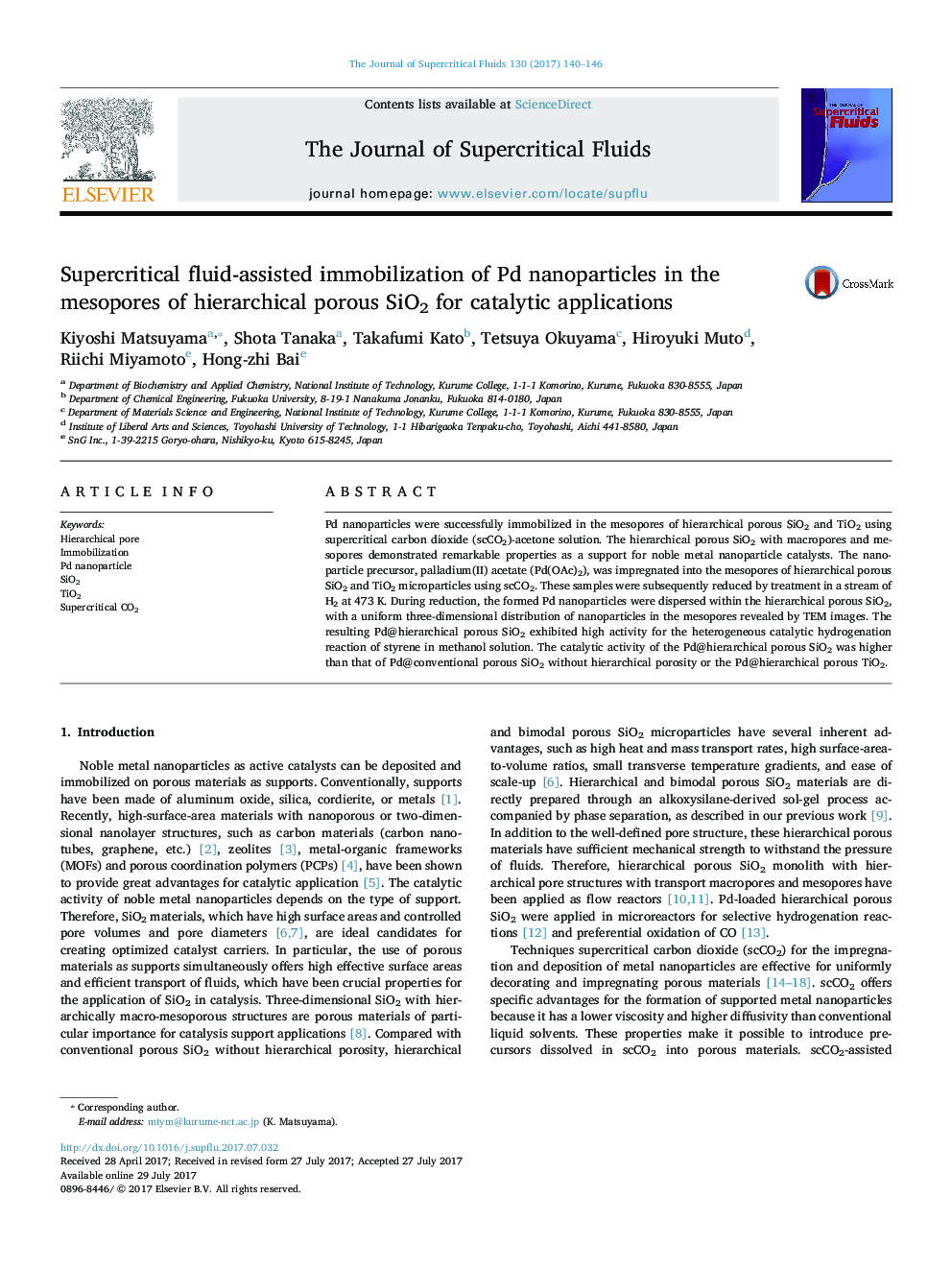| Article ID | Journal | Published Year | Pages | File Type |
|---|---|---|---|---|
| 6477683 | The Journal of Supercritical Fluids | 2017 | 7 Pages |
â¢Pd nanoparticles were immobilized in the mesopores of hierarchical porous SiO2.â¢Pd nanoparticles were dispersed in the interior cavities of the hierarchical porous SiO2.â¢Supercritical CO2 enhanced loading of Pd nanoparticle precursors in the mesopores.â¢The hierarchical pore structure enhanced the reactivity of Pd@SiO2.
Pd nanoparticles were successfully immobilized in the mesopores of hierarchical porous SiO2 and TiO2 using supercritical carbon dioxide (scCO2)-acetone solution. The hierarchical porous SiO2 with macropores and mesopores demonstrated remarkable properties as a support for noble metal nanoparticle catalysts. The nanoparticle precursor, palladium(II) acetate (Pd(OAc)2), was impregnated into the mesopores of hierarchical porous SiO2 and TiO2 microparticles using scCO2. These samples were subsequently reduced by treatment in a stream of H2 at 473Â K. During reduction, the formed Pd nanoparticles were dispersed within the hierarchical porous SiO2, with a uniform three-dimensional distribution of nanoparticles in the mesopores revealed by TEM images. The resulting Pd@hierarchical porous SiO2 exhibited high activity for the heterogeneous catalytic hydrogenation reaction of styrene in methanol solution. The catalytic activity of the Pd@hierarchical porous SiO2 was higher than that of Pd@conventional porous SiO2 without hierarchical porosity or the Pd@hierarchical porous TiO2.
Graphical abstractDownload high-res image (212KB)Download full-size image
